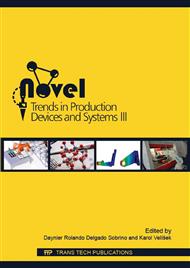p.174
p.182
p.192
p.200
p.213
p.222
p.230
p.238
p.246
Metal to Composite Plastic Conversion of Mechanically Loaded Part Using Numerical CAE Analyses
Abstract:
The material replacement of component is often used procedure, which helps to reduce production costs, simplify manufacturing, improve functional properties of component and bring another benefits. In the last years, more and more metal parts are converted to plastic, also in the cases of mechanically loaded parts. For these special applications, the fibre reinforced composite plastics are successfully used. However, the mechanical properties of composite plastic are strongly dependent on the fibres orientation and following anisotropic behaviour. Moreover, the orientation of fibres is influenced by the conditions of the part production. Due to the number of these dependencies, the material conversion becomes a complex task which cannot be solved with analytical approach. Especially in case of complicated part geometry. In this study, the connection of two different numerical solvers was used for material conversion of a part from automotive industry. First, the new geometry of analyzed part was designed in order to compensate lower mechanical properties of plastic in comparison to metal. Next, the new part manufacturing was simulated and this way obtained anisotropic properties of composite plastic were described. Finally, the structural analyses of original metal and new composite plastic part with real anisotropic properties were performed to verify achievement of material conversion. The aim of this study is to demonstrate, how numerical analyses can help to predict an unexpected result.
Info:
Periodical:
Pages:
213-221
Citation:
Online since:
August 2016
Authors:
Price:
Сopyright:
© 2016 Trans Tech Publications Ltd. All Rights Reserved
Share:
Citation:


